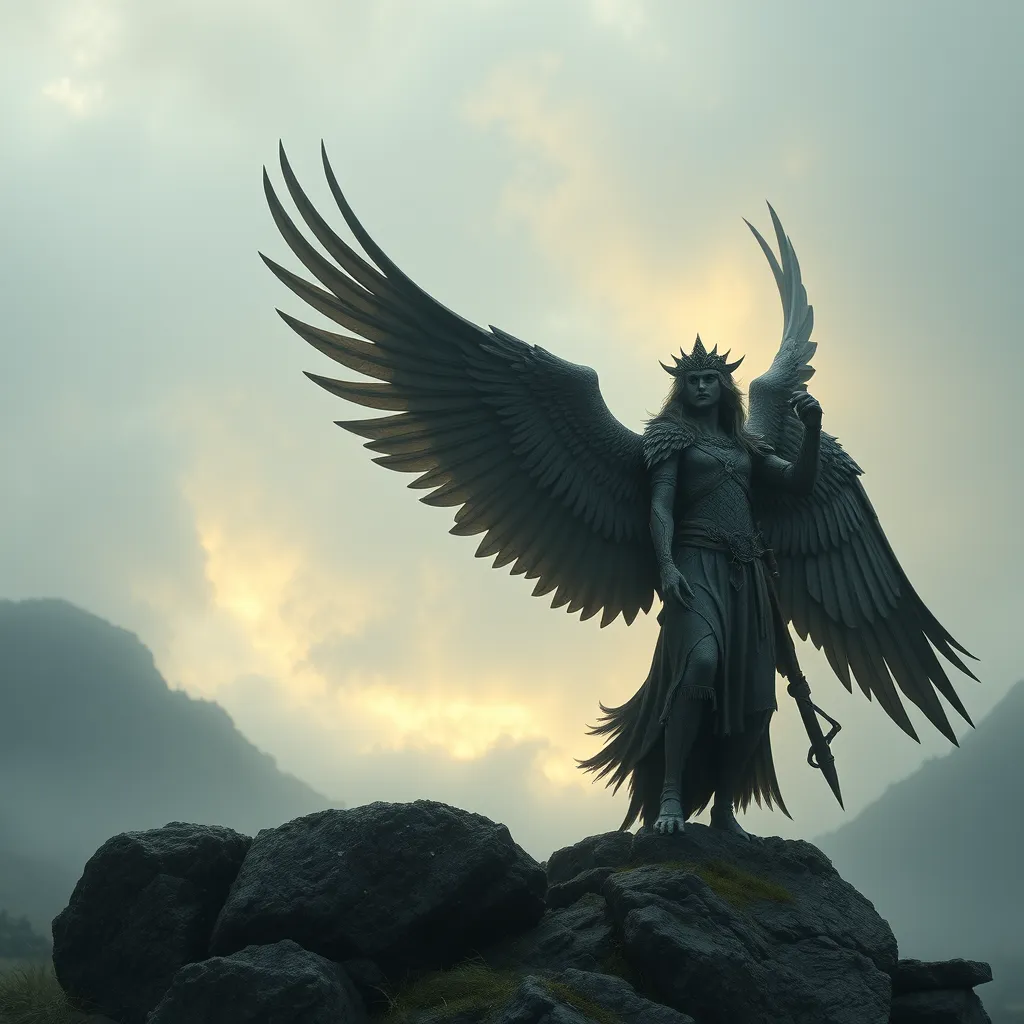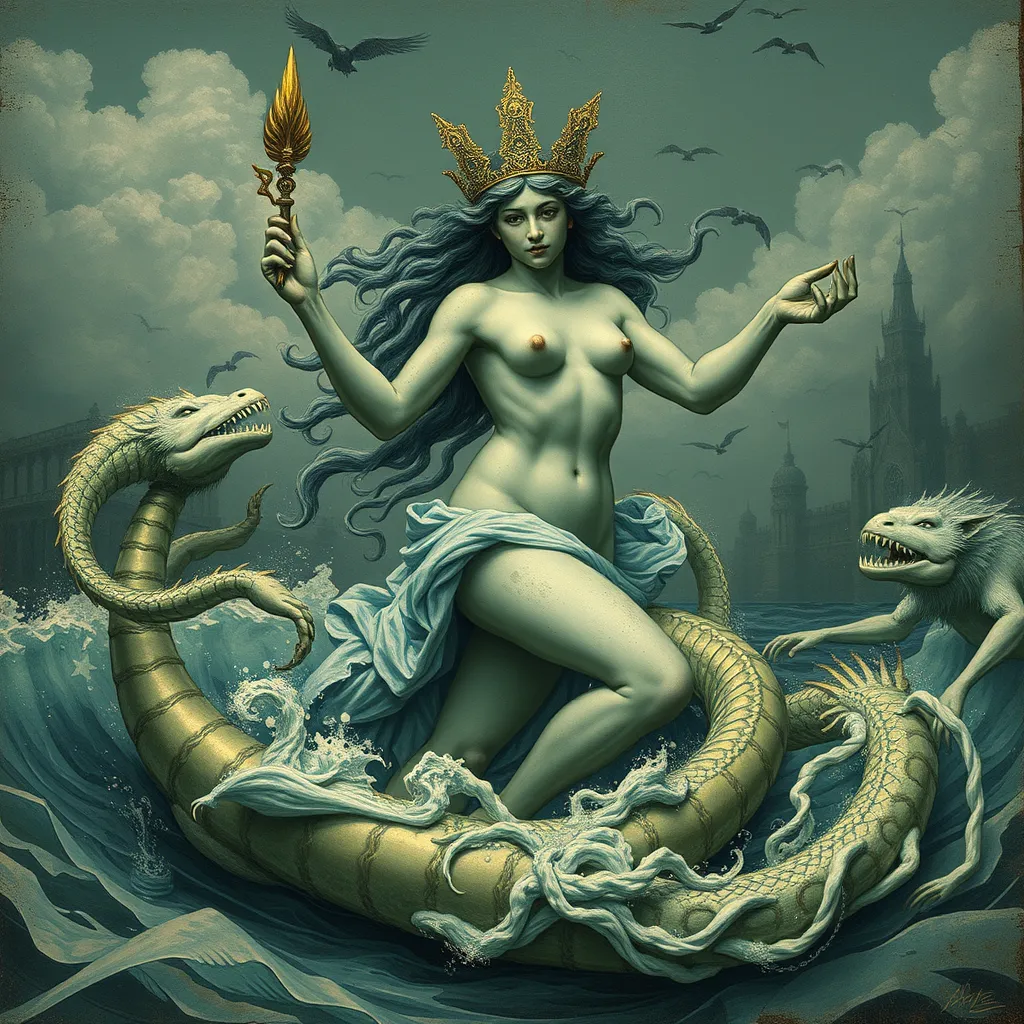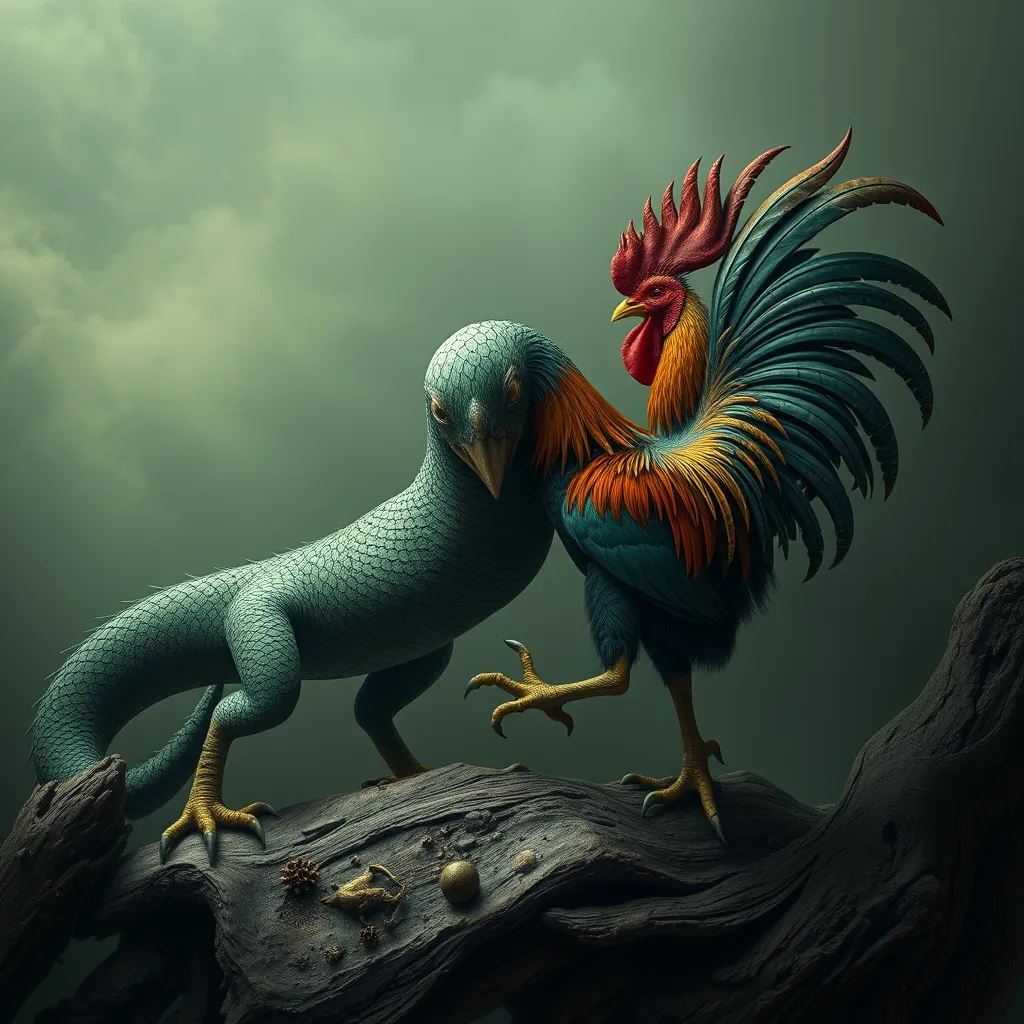Exploring the Connection Between the Harpies and the Celtic Goddesses of War
I. Introduction
The Harpies are fascinating creatures in Greek mythology, often depicted as winged spirits associated with storms and winds. They are known for their dual nature, sometimes serving as agents of punishment and at other times as benevolent figures. Meanwhile, the Celtic pantheon harbors powerful goddesses of war, such as Morrigan and Brigid, who embody strength, fate, and protection in battle. This article aims to explore the connections between the Harpies and these Celtic goddesses, examining their origins, characteristics, and cultural significance.
II. The Harpies: Origins and Characteristics
A. Definition and description of Harpies
Harpies are typically described as half-woman, half-bird creatures. According to ancient texts, they have the bodies of birds but the faces of women. They are often portrayed as swift and fierce, capable of snatching away individuals and causing chaos.
B. Historical context and significance in Greek mythology
In Greek mythology, Harpies are often associated with the Underworld and are considered the personifications of storm winds. Their name derives from the Greek word “harpazein,” which means “to snatch.” They first appear in literature in Homer’s “Iliad” and later in the myth of Phineas, where they torment the blind prophet by stealing his food.
C. Symbolism and roles of Harpies in mythological narratives
Harpies symbolize various concepts, including the destructive power of nature, the inevitability of fate, and the chaotic aspects of the universe. They serve different roles in myths, from agents of divine retribution to guardians of the threshold between life and death.
III. Celtic Goddesses of War: An Overview
A. Introduction to key Celtic goddesses (e.g., Morrigan, Brigid)
The Celtic pantheon features several powerful goddesses associated with war and battle. Among them, Morrigan stands out as a complex figure, often linked to fate, sovereignty, and the battlefield. Brigid, while also associated with war, embodies healing and poetry, showcasing the multifaceted nature of Celtic spirituality.
B. Attributes and characteristics of these deities
Celtic goddesses of war are characterized by their strength, wisdom, and sometimes terrifying aspects. They are often depicted as shapeshifters, capable of transforming into animals, which ties them to the natural world and its powers.
C. The role of warfare and battle in Celtic mythology
Warfare in Celtic mythology is not merely a physical contest but a reflection of cosmic order and chaos. Goddesses like Morrigan often influence the outcomes of battles and are invoked for protection and victory, highlighting the integral role of these deities in the cultural fabric of ancient Celtic societies.
IV. Comparative Analysis of Harpies and Celtic War Goddesses
A. Similarities in their roles and representations
Both Harpies and Celtic war goddesses are linked to themes of chaos, fate, and transformation. They embody the duality of creation and destruction, often influencing the outcomes of human endeavors, especially in warfare.
B. Differences in portrayal and cultural significance
While Harpies are often viewed as malevolent beings, Celtic goddesses like Morrigan and Brigid are more complex, possessing both nurturing and destructive qualities. This difference highlights the unique cultural narratives surrounding femininity and power in Greek and Celtic mythologies.
C. Thematic connections: chaos, fate, and protection in warfare
- Chaos: Both figures represent the tumultuous nature of war and conflict.
- Fate: They are seen as agents of destiny, influencing the lives of warriors and the outcomes of battles.
- Protection: Harpies and Celtic goddesses offer various forms of protection, whether through direct intervention or by instilling fear in enemies.
V. The Influence of Cultural Exchange on Mythology
A. Historical context of Greek and Celtic interactions
The historical interactions between Greek and Celtic cultures, particularly during the expansion of the Roman Empire, allowed for the exchange of myths and religious practices. This cultural fusion may have influenced the development of similar themes in both mythologies.
B. How cultural exchange may have shaped the narratives of Harpies and Celtic goddesses
As the Greeks and Celts encountered one another, elements of their mythologies began to blend. The portrayal of powerful female figures may have been influenced by each culture’s understanding of the feminine and the divine.
C. Examples of shared motifs and themes in mythology
Common motifs include:
- Transformation and shapeshifting.
- The intertwining of life, death, and rebirth.
- Nature as a powerful force that affects human lives.
VI. Artistic Representations and Interpretations
A. Examination of artistic depictions of Harpies and Celtic goddesses
Throughout history, artistic representations of Harpies and Celtic goddesses have varied, reflecting the cultural contexts in which they were created. In ancient Greece, pottery and sculptures often depicted Harpies as fearsome creatures, while Celtic art showcased goddesses with intricate designs, emphasizing their connection to nature and life.
B. How art reflects their roles in society and mythology
Art serves as a medium through which the values and beliefs of a society are expressed. The depiction of Harpies as chaotic entities may reflect societal fears, whereas the portrayal of Celtic goddesses as protectors and warriors highlights the reverence for female power and agency.
C. Modern interpretations and adaptations of these figures
In contemporary media, both Harpies and Celtic goddesses have been reimagined, appearing in literature, films, and video games. These adaptations often emphasize their strengths and complexities, inviting new audiences to engage with these ancient figures.
VII. The Legacy of Harpies and Celtic Goddesses in Popular Culture
A. Influence on contemporary literature and media
The legacy of Harpies and Celtic goddesses has permeated modern storytelling. They appear in fantasy novels, graphic novels, and films, often as symbols of empowerment or chaos, reflecting ongoing societal themes surrounding gender and power.
B. Representation in movies, books, and video games
- Films such as *Clash of the Titans* feature Harpies as antagonists.
- Books like *The Mists of Avalon* explore the roles of Celtic goddesses within a narrative of struggle and power.
- Video games, such as *God of War*, incorporate elements of these mythologies, presenting players with rich narratives rooted in ancient lore.
C. The enduring fascination with these mythological figures
The enduring fascination with Harpies and Celtic goddesses lies in their representation of human experiences and emotions—fear, courage, chaos, and protection. As modern society grapples with these themes, these ancient figures continue to resonate.
VIII. Conclusion
In summary, the exploration of the Harpies and Celtic goddesses of war reveals significant connections and contrasts between these mythological figures. Both embody themes of chaos, fate, and protection in warfare, though they are portrayed differently within their respective cultures. Understanding these mythologies contributes to a broader comprehension of cultural narratives and gender dynamics in history. Further research into comparative mythology can unveil even more intricate relationships between various mythological traditions across time and space.



